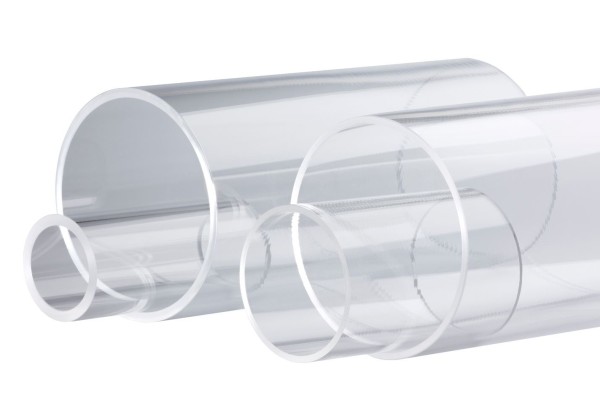
Fused silica is the amorphous state (glassy state) of silicon oxide (quartz, silica). It is a typical glass with long-range disorder in its atomic structure. It provides its high service temperature and low coefficient of thermal expansion through a three-dimensional structure cross-linked, also known as synthetic fused silica.
It differs from traditional glass in that it contains no other ingredients, which are often added to glass to lower the melting temperature. Therefore, fused quartz has higher working and melting temperatures. Although the terms fused silica and fused silica are used interchangeably, the optical and thermal properties of fused silica are superior to those of fused silica and other types of glass due to its purity. For these reasons, it is used in applications such as semiconductor manufacturing and laboratory equipment.
Fused quartz properties
The use of fused quartz material in investment casting mold shells has been increasing year by year in developed countries such as the United States and Japan. It has experienced very effective results in the surface layer of silica sol mold shells. At the same time, Zircon material has made great breakthroughs in its use and price ratio, and it is an ideal material for engineering applications.
Fused silica has several beneficial properties that make it an ideal material for glass manufacturing in optical products, high-tech products, and a variety of other applications. These include:
chemical properties
Fused silica produces a chemically inert glass that is considered to have a high level of chemical purity. This means it can be exposed to several different types of chemicals used in commercial, industrial and laboratory settings without degrading or suffering damage. It is compatible with most other chemicals, although both potassium hydroxide and hydrofluoric acid will damage it.
Electrical properties
Fused silica glass is electrically insulating. Its resistance changes with temperature, ranging from 1018 Ω*cm (20 °C) to 1010 Ω*cm (400 °C). It also has good dielectric properties and high-frequency performance, with low dielectric constant and low dielectric loss. Due to the large silicon-oxygen bond gap in the material structure, only ionic impurities in the material can be charged and conductive, making it extremely resistant.
Mechanical behavior
One of the most unique and beneficial properties of fused quartz is its elasticity. Manufacturers can create flexible micromechanical components that would otherwise face breakage or wear during movement.
Optical properties
Fused quartz is a highly transparent material that can be used in applications ranging from ultraviolet to infrared, covering the entire visible light spectrum and extending well beyond it. Manufacturers can also customize the delivery of parts by modifying the technology and purity levels used in the production process. Contaminants such as aluminum, iron, and sodium can alter light absorption.
Thermal properties
Fused silica has a low and very consistent coefficient of thermal expansion, making it an excellent material choice for components that need to be stable over a wide temperature range. This property, along with its excellent dimensional stability, allows it to withstand thermal shock and any related damage.
Applications of fused quartz
Due to its highly superior properties, fused silica is used in a variety of precision manufacturing for commercial, industrial and laboratory applications. Some of the most common applications include:
space shuttle and international space station
Due to its strength, fused quartz is used in deep diving vessels such as floats and undercarriage mirrors. Fused quartz is also used to form windows in manned spacecraft.
Chemical and Medical Precision Glass
Fused silica components can withstand exposure to chemicals and pharmaceutical formulations because they are chemically pure and resistant to chemical and thermal damage.
Electronics/Electronic Technology
Fused silica can be used to make insulating components because they are non-conductive, provide high penetrating field strength, and ensure low electrical losses.
high temperature operation
Because fused silica has a low coefficient of thermal expansion, it can be used to manufacture parts for high-temperature applications.
Light and laser technology
Fused silica components can be used for laser separation of light.
Optical system components
Manufacturers can produce transmission optics, mirrors, metrology components and lenses for use in optical systems.
Semiconductor Industry
Due to its purity, fused silica is commonly used in semiconductor components. An EPROM, or erasable programmable read-only memory, is a type of memory chip that retains its data when its power is cut off, but it can be erased by exposure to strong UV light. The EPROM is identifiable by a clear fused silica window located on the top of the package, through which the silicon chip is visible and can be exposed to UV light during the erasure process.
Fused silica has almost ideal properties for making x-ray mirrors such as those used in telescopes. The material behaves predictably and allows optical manufacturers to create very smooth polishes on surfaces and produce the desired pattern with fewer test iterations. In some cases, high-purity UV-grade fused silica has been used to manufacture multiple individual uncoated lens elements for special purpose lenses, including the Zeiss 105 mm f/4.3 UV Sonnar (formerly manufactured for Hasselblad cameras, and the Nikon UV-Nikkor 105 mm f/4.5 (currently sold as the Nikon PF10545MF-UV) lens. These lenses are used in UV photography because quartz glass has a lower extinction rate than lenses made with the more common flint or crown glass formulations .
UV hygiene
Fused quartz is resistant to high temperatures and radiation, and UV quartz glass can be used to make UV sanitary equipment. It also allows UVC light to pass through, thus aiding in disinfection.
